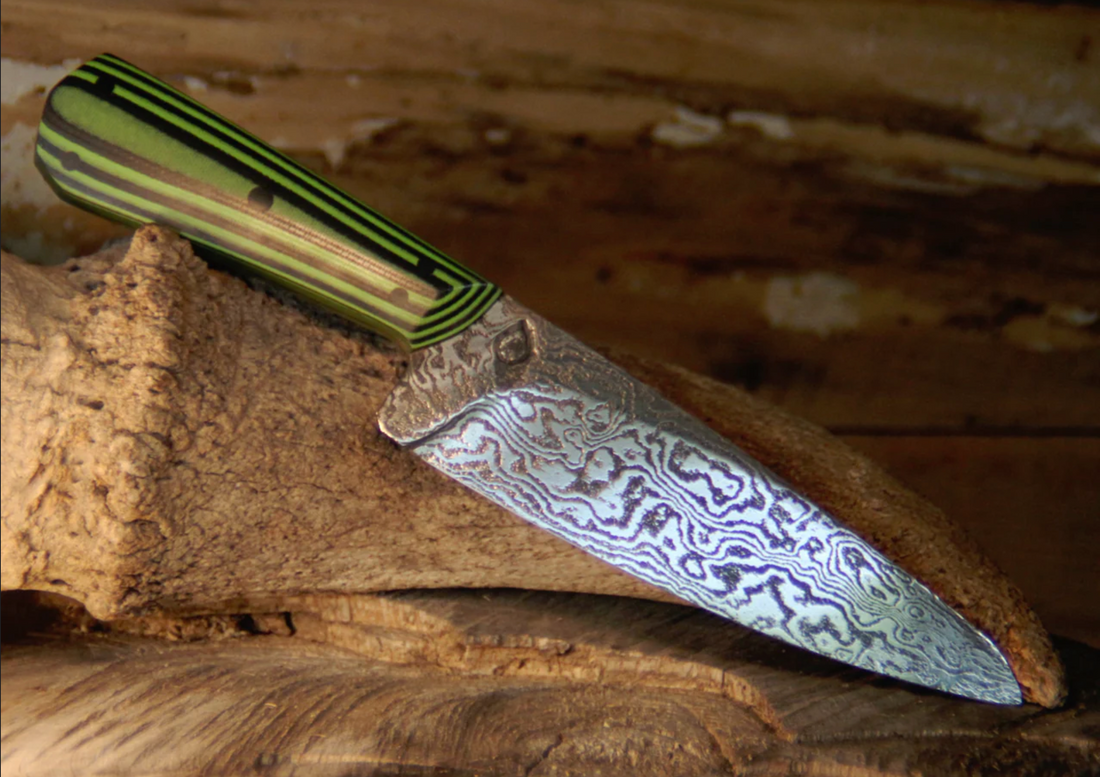Introduction:
In my pursuit of knowledge in the world of knife making, I always make room for experimenting and learning. As a custom knife maker from Winnipeg, Manitoba, I recently encountered an unexpected challenge that led to valuable insights and lessons. But! Overheating damascus steel is best to be avoided.
The Forge Upgrade:
In my pursuit of improving my forging process, I upgraded the blower on my forge. I wanted things to get hot and get hot quicker. This alteration worked but it also worked too well. I realized this when the heat had unintended consequences for my damascus steel.
The Unfortunate Overheating:
During the forging process, I unintentionally overheated the damascus steel. This error became apparent when I acid etched the blade and revealed imperfections and damage in the steel. Disheartened but determined, I embarked on a journey to rectify the situation...Thermal Cycling
Thermal Cycling:
I decided to implement a rigorous approach and conducted a total of seven rounds of thermal cycling, including a DET (Differential Thermal Etching) anneal, to gradually improve the steel's properties.

The Benefits of Thermal Cycling:
The intensive thermal cycling process proved invaluable. Not only did it increase the toughness of the steel, but it also refined the grain structure, resulting in a superior quality material. There are unfortunately visual problems with the steel that was characterised by Dr. Larrin Thomas as "possibly grain boundaries having been destroyed."
Handles:
With the steel partially restored and improved, the next step in this journey is fitting the knives with handles. Each knife, born from this challenging experience, will be a testament to the resilience of the steel. But what to do with them? Gifts? Give-aways? I'm not sure. They are now in my knife stock drawer waiting for a decision.
The Power of Knowledge:
Throughout this entire experience, one resource proved invaluable: Dr. Larrin Thomas' book "Knife Engineering" (also known as "Knifesteel Nerds"). Through reading and studying this comprehensive guide, I gained a deeper understanding of the technical aspects of blade steel. It empowered me to navigate and attempt overcome the obstacles encountered during this journey.
Moving Forward:
While the experimentation with thermal cycling and the recovery of the damascus steel proved somewhat successful, I must admit that the experience was arduous. Although I am glad to have learned more about the process of normalization, I would likely choose to start the project from scratch instead.
Conclusion:
Every challenge is an opportunity for growth and learning. My encounter with overheating and subsequent thermal cycling gave me greater insight in metallurgy and reinforced the importance of continuous education in the field of knife making.
Remember, every setback can be a stepping stone toward greater expertise. Stay curious, keep exploring, and embrace the journey of constant improvement in your craft.

